It had been a long, cold night. A night begun burning on one side and freezing on the other while facing a desert campfire, then finished in a sleeping bag that refused to warm up because I had no heat to give it. Cold as in painful. Cold as in feet so iced they demanded attention, sleep coming in 20-minute packets as conscious endurance waxed and waned.
It was also something of a cheat, because the thermometer—OAT instrument if you insist—in the ancient Cessna read 27° F when I slipped into the down bag at midnight and was rosily reporting 23° F when the bladder could no longer be denied a few minutes before dawn. Those numbers were reassuring; it had been a miserably cold night and I had been right to have been so aggrieved. But such bragging rights were denied as old thermometers can apparently lie, while we all know water in thin plastic bottles is allowed no such luxury. The bag-side water bottle had not a speck of ice in it when I got up.
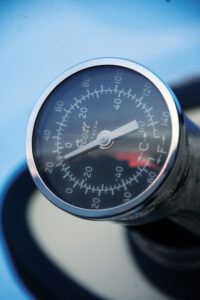
The forecast had been for 34° F, and it had to have been the more accurate assessment. Cold enough, at any rate, to deny any sort of meaningful rest. The me rekindling the campfire that morning was not quite banging on all eight. But there was a work party to distract the mind, and so it was on to grunting railroad ties and driving rebar stakes. That’ll warm up a polar bear—and ensure anyone already denied a sound night’s sleep isn’t going to get any better.
By a little after lunch it was time to get aviating out of the campground and on to the home drome before the low winter sun beat me to it. And so I puttered off, first in search of 100LL and secondly for home over the mountains. I had intended to take the Starduster on this trip, going so far as to begin loading it before a sense that simply tossing my meager overnight gear into the back of the 140A would be easier—and in no small way—warmer. Slower, yes. Not quite as adventurous, true. But warmer and so much easier to load. So I had taken the old Cessna. Later I realized I would have been very lucky to have gotten the Starduster’s 540 fired up after such a cold night. Ironically, excessive under-cowl heat in the biplane consumes its too small battery annually, and the wounded cells then on duty would have been as effective as asking a brick to deliver electrons. The sacrifices we make to the weight god.
The flight home was relaxingly warm, the little Cessna’s heater pumping out copious BTUs and my eyelids heavy as I winged my way to an unfamiliar field, an old, multi-runway WW-II leftover. Surprisingly there was a bit of traffic approaching, and I was the one confusing things when it was pointed out I was lined up on the runway next to the one I had announced. Oops. Interestingly, my traffic was a helicopter and he was kind enough to come to a hover and let me slide by. Not something you see every day—aircraft stopping in the sky to let you by—much less the novelty of running someone down in a Cessna 140A.
Maybe a week later I was in the Starduster, returning from the short flight to a neighboring airport. Arriving home I made a very nice landing, a pleasant surprise as I had not been flying much lately. As is my habit, I elected to make another couple landings to reinforce my apparently not fully perished skills. Naturally the second landing was a disastrous display of a pilot tagging along like the red rag on the end of a long load. The downwind was 125 feet high and the speed a few knots over target. By itself this latter fact is not that terrible as the biplane’s tumbleweed aerodynamics mean scrubbing off excess energy is laughably easy, so press on. And I did, making the downwind-to-base turn just as tight as ever and arriving on short final somewhere in the stratosphere still going a touch shy of the speed of heat. Left pedal to the floor, stick to the right rear and down the mineshaft we went. Pull it out of the slip, hmm a little high…sinking…%$#&@! Now it’s out of energy, it needs throttle. Bang! The tailwheel hits, then the mains, then we’re back in the air, now drifting and sinking again, loud lever to the firewall. Bang! Another skip and bounce, 300 hp clawing us into the air but not before a final soft kiss at the edge of the asphalt, but finally not sinking…flying again.
The next approach and landing were fine. Time to put the airplane in the hangar before I broke it and start thinking about what went wrong.
Conclusion: flying while tired. It was the same as announcing the wrong runway in the Cessna. There was no mistaking I was something out of Night of the Living Dead in that episode, and some bonehead maneuver was all but inevitable under those conditions. How easy would it have been to glance at the compass to confirm heading in the same direction as you thought you were? And yet it didn’t happen.
The bang-and-go in the Starduster is more insidious. Certainly this was the old cliche of an accident chain, a list of little things such as being a little too high, a little too fast, too slow mentally to recognize defeat well out on final and go around. Most telling, when I first realized I had over-slowed the airplane while still several feet above the runway, my first thought was it needs a touch of throttle, but the left hand just sat there while the right kept pulling back on the stick. Stupid! How many times do I need to learn this lesson? I knew what to do but somehow couldn’t summon whatever it is that actually makes you do it. That’s tired.
About that “touch of throttle.” My home runway is 2180 feet long and with 300 hp on tap a little dab will do ’ya and a big handful will carry you into the tall, green and uncut at the end of the runway. Which actually rolls off a tabletop into a commercial nursery. You don’t want to overdo it; you want to go around. Is there hesitation in the back of my mind when it comes to adding corrective power? If so, how come I didn’t long ago figure out that any sink while on the back side of the power curve meant an automatic go-around? Can’t chalk that up to being tired.
But for this instance, fatigue was the real issue. There was no overt cause, no cold desert night, but it had been a busy, distracting period with little flying. There were medical issues in the household, the holidays were in full swing, work deadlines played their part and a first grandchild had just arrived. It was a time more about concerns and changes rather than long restful sleeps. And that background clutter, call it fatigue but also know it as distraction, is a proven performance killer. It showed up on the stopwatch in my car racing days and it lurks more treacherously in the cockpit.
So, what to do about it? Well, no one plans on freezing in the desert all night, and once you’re there, spending a second night won’t help but somehow you and the airplane need to get home. So you’re going to fly, but possibly after a mid-day nap. And when you do fly, be careful about it. Stack the weather and daylight in your favor if at all possible. Don’t try anything new but stick to routine. Fly the normal pattern. Go through your checklist three times. Mentally pre-run the next step.
Just out of the swamp as our species is, don’t forget your reptile brain calls the shots when the eyelids are heavy. Highly unqualified to give medical advice as I am, we all know fatigue affects the executive function more than ingrained, long-term habits. I’m sure it’s physiologically little different than acute stress. When the boogeyman jumps out at us, we’ll react first with our fast-acting hardwired response and take the time to think about it later. Which is why suddenly seeing rocks and mountain goats in the windshield of your zoomy new Experimental means chances are fair you’ll grab for a knob, lever or toggle switch in your primary trainer. Time in type is the best cure for that, so once again you have a great excuse to fly, fly and fly some more. It might pay off someday.
Avoidance is even better. If you feel tired it’s not a good flying day. Save it for a better day when the deadline alligators aren’t snapping and you got recent, quality sheet time. Knowing what it feels like when “tired” would seem obvious, but is it really? Researchers say almost anyone playing out a modern urban existence is sleep deprived, almost by definition. Personally, I keep score on tiny things, such as fumbling with keys in a lock or clanking a dish onto the counter when you had something more gentle in mind. When I start dropping tools, I begin to think I might drop an airplane.
Mental signs are even more accurate. Admittedly it’s difficult to document the times I actually focused on anything, but when I find myself wandering more than usual, it’s a day to read about flying, not do it. In short, flying is ultimately too satisfying to waste on fatigue.

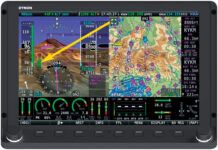
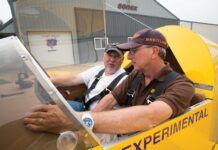
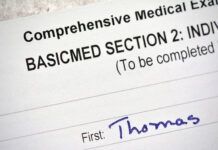
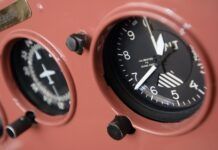
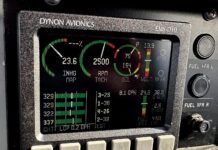
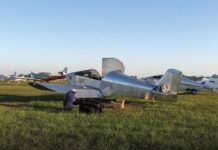

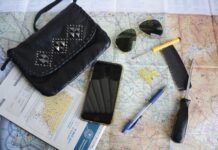

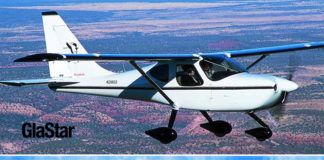
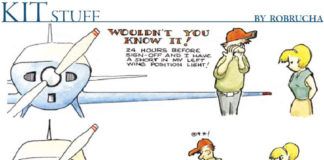

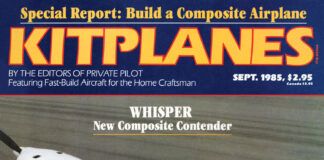
I like the last statement, putting a potential gauge on fatigue. I typically err to the side of feeling tired, or not up to my standards. But yes fumbling with keys and some other finer motor skills, is a good place to start your personal assessment.